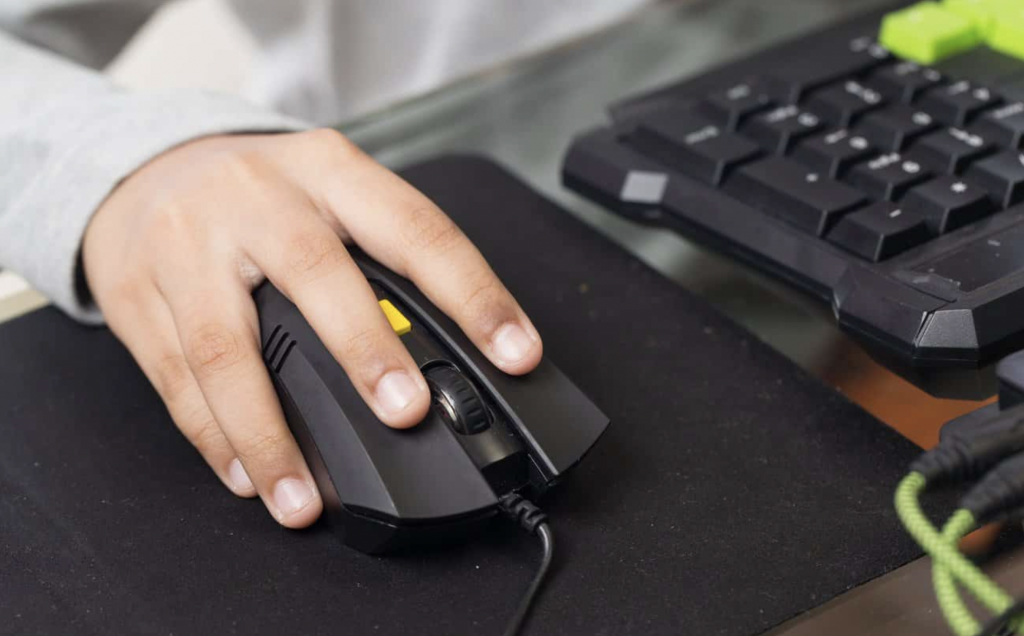Most people generally hold their computer mouse in the way that feels most comfortable, however, you may be surprised to know that there is a large debate as to which is the best way to hold a mouse. This stems largely from the CS:GO community, who are trying to find the optimal way to hold a mouse to leverage every possible competitive advantage when it comes to this high skill first-person shooter environment.
Changing the way you hold your mouse may change the way you perform in first-person shooter video games, but for the more common person, changing the way you hold your mouse may be beneficial to your health. Below, we list the most common types of grips when holding a mouse, with some advantages and disadvantages of each.
Claw
The claw grip is one of the most popular mouse grips for anybody playing a first-person shooter video or similar streaming online game. The claw grip would have you holding the mouse with your ring finger along the side of the mouse, middle and index fingertips on their respective buttons and the thumb gripping the other side of the mouse with only the very back of your palm holding the mouse in palace and acting as stabilization. The claw is a mixture between palm and fingertip styles of grip.
Advantages of the claw grip:
- Increased dexterity and adjustment over palm grip.
- Can be used with effectively with low or high DPI settings.
- Aim with the wrist rather than full arm movements.
Disadvantages of the claw grip
- Prone to carpal tunnel.
- Mostly motionless finger joints can lead to additional aches and pains.
- While effective at low or high DPI, it is considered not to be as effective as palm at low DPI or Fingertip at high DPI.
- Favours larger hands.
Palm
The palm grip is mostly used by people who don’t favour first person shooter games as much. From other games to normal people who work on a computer every day, the palm is considered the standard for a mouse and was the original design usage. The palm grip would have you lay your hand on the mouse with full contact of the palm and fingers.
Advantages of the palm grip
- The most ergonomic grip, if you suffer from carpal tunnel or just painful joints, the palm grip is best for you.
- The most effective grip style for low DPI gameplay, allowing larger arm movements to be precise and accurate.
- Most mouse designers design a new mouse with the palm grip at the forefront of the design, making the palm grip the most comfortable and easiest to use other mouse features like additional buttons.
Disadvantages of the palm grip
- As low DPI is preferred when using the palm grip for bigger movements to achieve small accuracy, longer sweeping movements can be more difficult. An instant 180-degree turn can be slower with the lower DPI required for the palm grip.
- Less precise and slower movements on normal DPI settings.
Fingertip
One of the much less common types of grips, those who use it swear by increased accuracy. A fingertip grip is, as it says, only having contact with the mouse on your fingertips. No palm or carpal area contact is used at all. This style of grip may not be effective for most use cases, but in first-person shooters can be highly effective for pinpoint accuracy.
Advantages of the fingertip grip.
- High precision while still retaining a high DPI.
- Less hand contact on the table surface means less resistance, aiding in precision.
- Hand size does not matter
Disadvantages of the fingertip grip
- Bad for carpal tunnel and joint health.
- Requires a lightweight mouse.
- Requires preferably a wireless mouse.
Consistency
Generally speaking, most people are able to switch between different grips depending on the use case at hand. If you use a fingertip or a palm grip, trying out a claw grip when you play Blackjack for money may be very beneficial to your game play.




